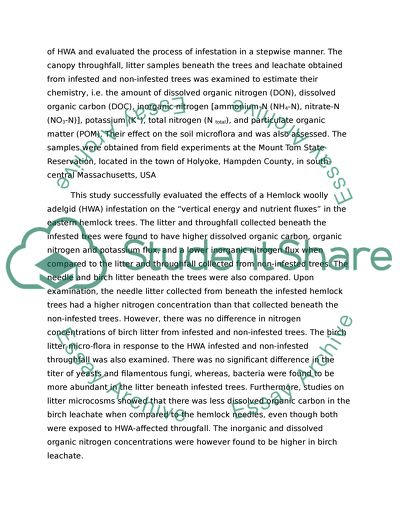Retrieved from https://studentshare.org/biology/1426121-critique-and-key-learnings-from-the-article-the-ecology-of-energy-and-nutrient-fluxes-in-hemlock-forests-invaded-by-hemlock-woolly-adelgid
https://studentshare.org/biology/1426121-critique-and-key-learnings-from-the-article-the-ecology-of-energy-and-nutrient-fluxes-in-hemlock-forests-invaded-by-hemlock-woolly-adelgid.


